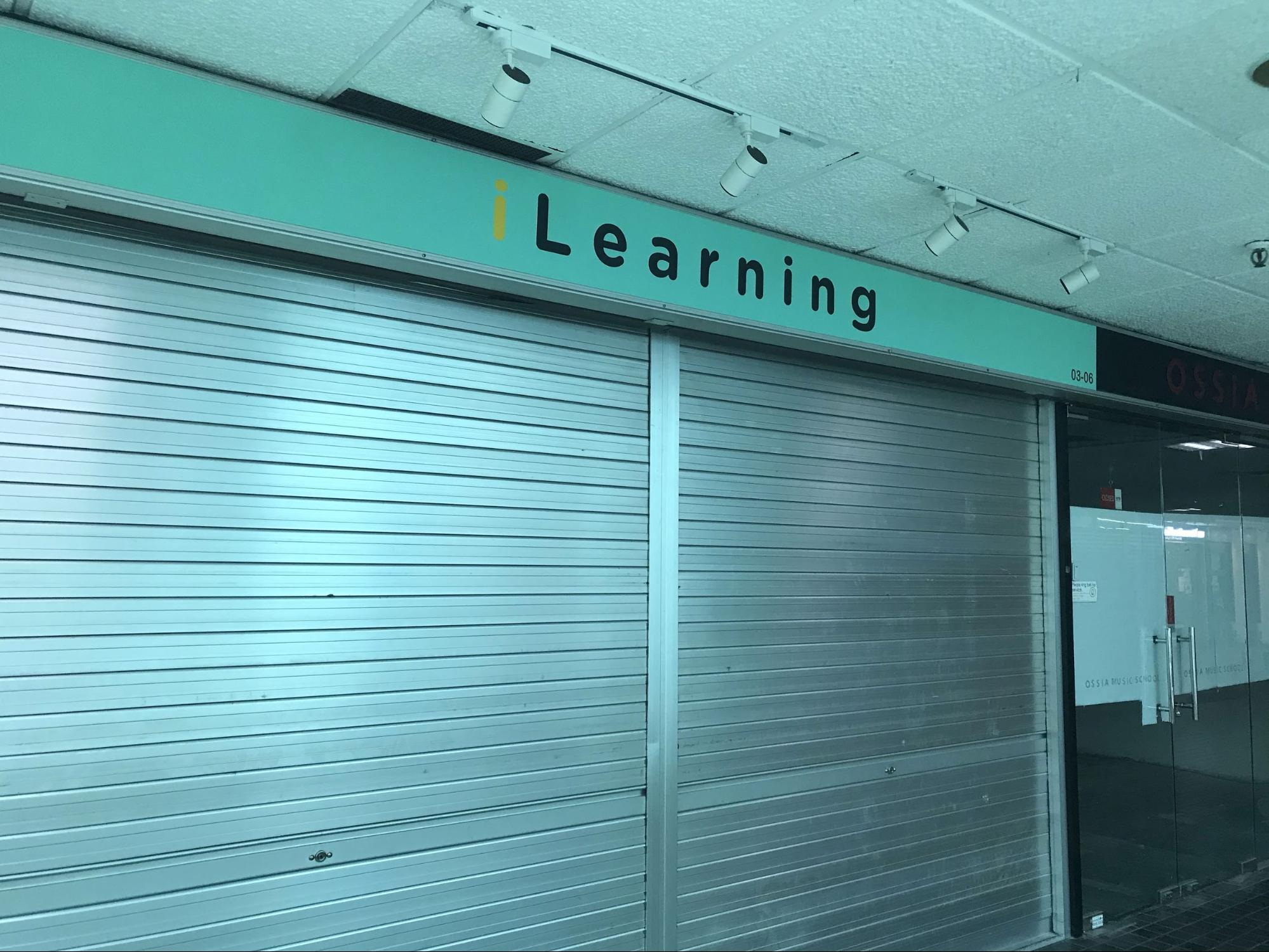Home to 39 different tuition and enrichment centres, Beauty World Centre is eerily quiet today.
It’s the first weekend after authorities announced the suspension of all centre-based tuition and enrichment classes from March 26 to April 30. For the first time in living memory, there are no students loitering under the escalator or outside McDonald’s. I’ve always joked that the tenant composition of my neighbourhood mall is “70% tuition centres, 30% everything else”, but this tongue-in-cheek quip has never felt truer than it does this Saturday morning.
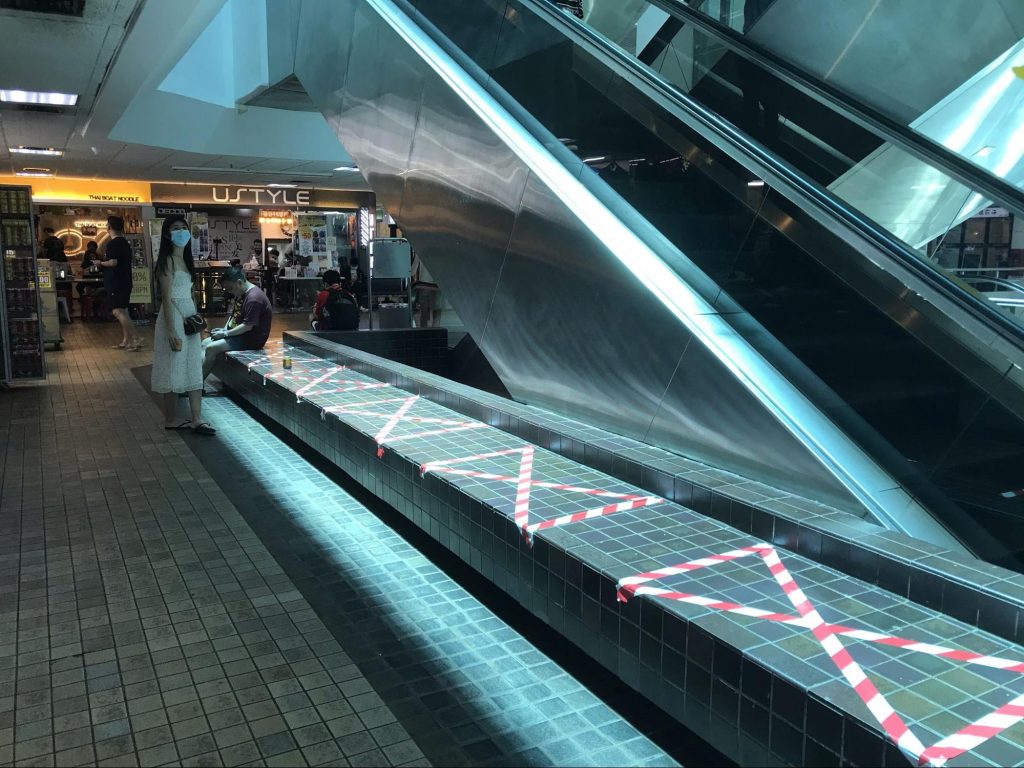
These centres will remain shuttered for more than a month.
Tuition is a $1.4 billion industry in Singapore, and many Singaporean students have been affected by the move to suspend tuition lessons. Tuition centres are not risking the harsh penalties for non-compliance by remaining open, but neither are they refunding fees and closing up shop for the month.
Instead, many have implemented home-based e-learning measures including but not limited to: emailing PDFs of lesson materials to student and live-streaming lectures over Zoom.
A surprising number of the tuition centres are willing to talk to me candidly about their struggles.
“Initially, when the news came out, we were frantic because a lot of parents started texting us: ‘Oh shit, is tuition cancelled? Is your tuition centre going to close down?’” says Kimi, an admin member at Math Academia, which is a Mathematics tuition centre located on Level 3 of Beauty World Centre.
“We’re using Zoom, doing it kind of like uni-style. We have content online and we’re teaching [the students] via online questions. If they have any questions, they can also ask us because it’s live.”
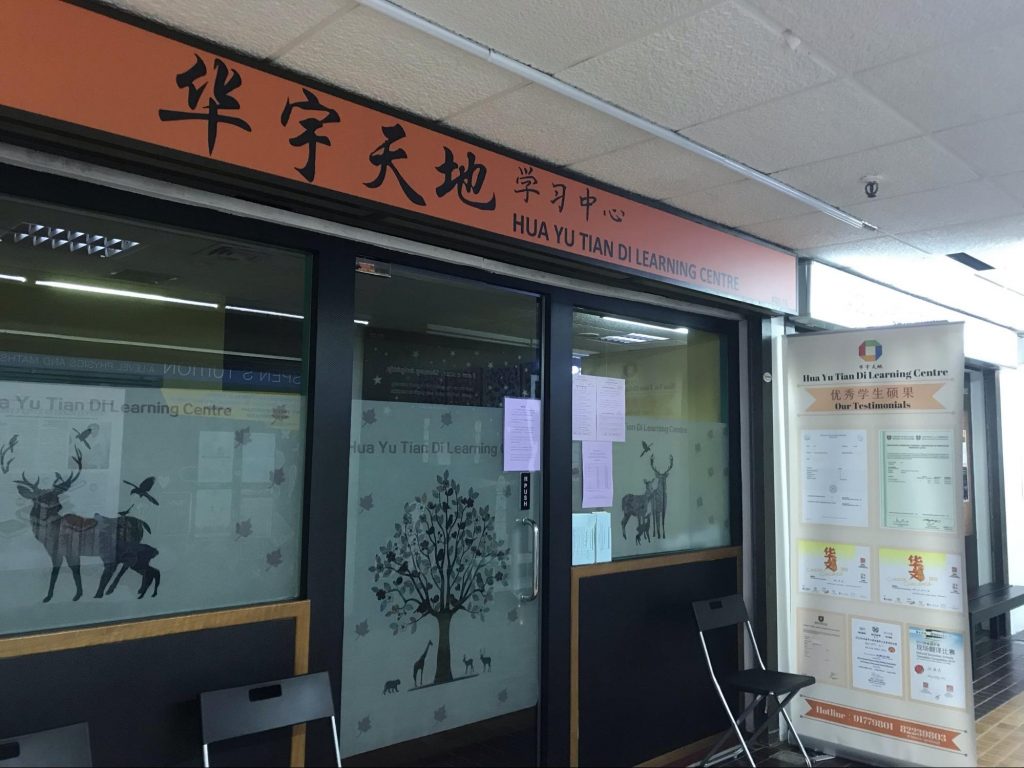
“So right now, the admins are just chionging the work and we’re trying to bring tuition online. And we have to finish everything by April. That’s kind of our problem now—finishing one month’s worth of content in a few days. And we actually have to notify parents and stuff to make sure they’re ok with having the tuition online.”
Being swamped with admin work seems to be the norm amongst the tuition centres at Beauty World Centre. The admin at Modular Education, who declined to be named, echoes a similar sentiment:
“I really have a lot of admin work. We have to send out worksheets and follow up with calls to the parents. What is your arrangement? What is your alternate method? Every parent is asking.”
Like many of the other centres at Beauty World, Modular Education has printed out notes and worksheets for parents to pick up over the weekend.
While the quick response has certainly been commendable, it’s questionable just how close of a substitute online lessons can be for regular face-to-face tutoring.
Private tuition does not come cheap, with tuition lessons at the junior college level costing upwards of $110 for a two-hour lesson. At that price point, it’s clear that students are expecting more than a mere regurgitation of content they’ve already learned in school, or something they can learn by watching a video on YouTube. Why pay a hundred dollars to watch a live-streamed lecture when you can get the same thing for free on Khan Academy? Why pay a hundred dollars for PDFs of notes or Organic Chemistry topic summaries when you can purchase a study guide at a fraction of the cost at Popular?
However, such an analysis would overlook the reason why tuition centres have survived and thrived for as long as they have in the digital age.
Fundamentally, the product that tuition centres offer isn’t a product at all, but a service. Tuition has been in such high demand in recent years not because of the content private tutors teach (exactly the same as what is taught in any MOE school), but because tutors offer students convenience by repackaging content to make it more accessible, teaching students tricks and tips to solve higher order questions faster, and analysing past-year trends to spot potential exam questions.
In other words, what tutors have to offer students are the academic shortcuts that won’t be taught in school. How then does this product translate to the online world?

For other subjects, the tutoring simply needs to happen offline to be of any aid. I still remember struggling to understand 3D vectors last year to the point where my Math tutor had to physically grab a piece of A4 paper and a graphing calculator that happened to be on the table, and hold them together to explain the concept of a line of intersection. The frustration of going through the same traumatic process, this time with the added barrier of a screen, is an ordeal which I am sure many students can relate to.
The admin of Modular Education, which teaches students from Primary to JC, also pointed out the significance of a tuition centre’s age group in the feasibility of online learning. Online tutoring makes more sense for older students, who are more self-directed, than for younger ones: “Primary level and Lower Sec is more of the problem. It also depends on what subject you’re teaching. For example for Math, [the teacher] needs to check the working and that cannot be done as easily online.”
“Actually, it’s just a minority that is not ok [with having online lessons],” said Kimi from Math Academia. There’s a few hundred students here, and most are ok with it. It’s just like, five? And they’re not unhappy or anything, they just feel it might not benefit their child as much, so they’ve decided to opt out of online tuition.”
Since my weekly H2 Chemistry tuition class was replaced by a live-streamed lecture hosted on Zoom this week, I also feel somewhat qualified to comment on the experience, and how it measured up against regular classroom learning.
10 minutes before my lesson was due to start, I logged on to the tuition centre’s in-house learning portal (which we had used regularly to take weekly quizzes, even before classes were suspended) to access the Zoom link for the virtual lesson. However, due perhaps to the sheer number of students who were all also trying to log on at the same time, the login page just sat there buffering for five minutes no matter how many times I tried refreshing the page.
Frustrated, I grabbed my phone and composed a quick Whatsapp message to the centre admin to inform them that I was unable to log in to my learning portal account and asked if it would be possible for them to send me the Zoom link directly over Whatsapp. Fortunately, the link was sent to me over Whatsapp in a matter of seconds and I was able to join the virtual classroom despite still being unable to log into my learning portal account. I turned on the webcam, popped in my earphones, and braced myself for my first online tuition experience.
The lesson started once all 88 participants had joined the virtual classroom and was conducted by two tutors (who were seated one metre apart from each other because, well, social distancing) who were live-streaming from the centre. They informed us that our faces were being projected on the screen behind the camera so that they could gauge our confusion, or lack thereof, from our facial expression. Students were encouraged to make use of the Reaction function on Zoom to show either a ‘thumbs up’ or a ‘clap’ emoji to indicate that the video and audio quality was ok. The lesson was conducted in a talk show format, with the two tutors conversing with each other, asking each other questions, and taking turns to speak. They also used Zoom’s Share Screen function to go through lecture notes and share annotations with us. Throughout the lesson, the Poll function was used to periodically check students’ understanding.
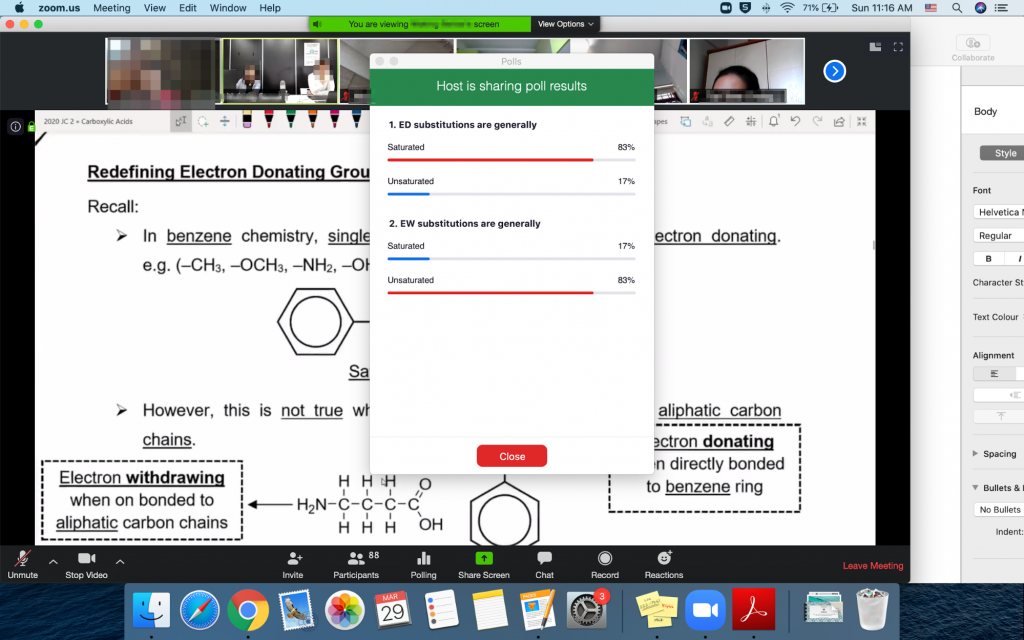
Despite my poor live-streaming experience, I am aware that there are many ways that it could have gone much worse. While my tuition centre had had the funds to invest in building a learning portal, paying for a Zoom subscription, and hiring a customer service team to respond in real time to messages from students who were experiencing technical difficulties, the tuition industry is made up of many smaller players who do not have sufficient economies of scale to make such investments.
Video-conferencing lessons for smaller tuition centres, which have not had the capacity to develop their own in-house digital portals or invest in business-grade paid solutions, will be limited to whatever free video conferencing apps are available to them, like Skype, Google Hangouts, or Zoom Basic. Each comes with their own set of constraints. Apps like Hangouts and Skype are not designed to handle too many members at the same time and students might experience connectivity issues or lags if the virtual classroom is too large. The audio and visual quality of such free apps tends not to be high as well. And while Zoom has lifted its 40-minute limit on free Basic accounts for K-12 schools, tuition centres are not schools in the strictest sense of the word, so such privileges are unlikely to be extended to them. This means that even the highest quality, lag-free online lesson with crystal clear definition and audio will be cut off abruptly in less time than it takes to finish watching a K-drama episode.
However, even with this many factors stacked against the tuition industry, it still seems premature to cry that 2020 will be the year that the 1.4 billion industry finally meets its demise.
For one, the suspension of tuition and enrichment centres will only be for one month, at least at the time of this article’s publishing.
For another, tuition fees tend to be collected on a termly basis, with fees for the next term being collected before the previous term ends.
The announcement coming when it did, in the first week of term 2, means that most current tuition students have already paid their tuition fees for the next 10 weeks and will have no choice but to suck it up, and watch their hundred-dollar live-streamed lectures in bed on their weekend mornings. As long as the suspension isn’t extended past May and there aren’t too many angry parents beating down the door demanding refunds on their tuition fees, it seems like tuition centres will probably ride this crisis out.
But what if things get worse, schools are closed, and tuition centres stay shuttered indefinitely?
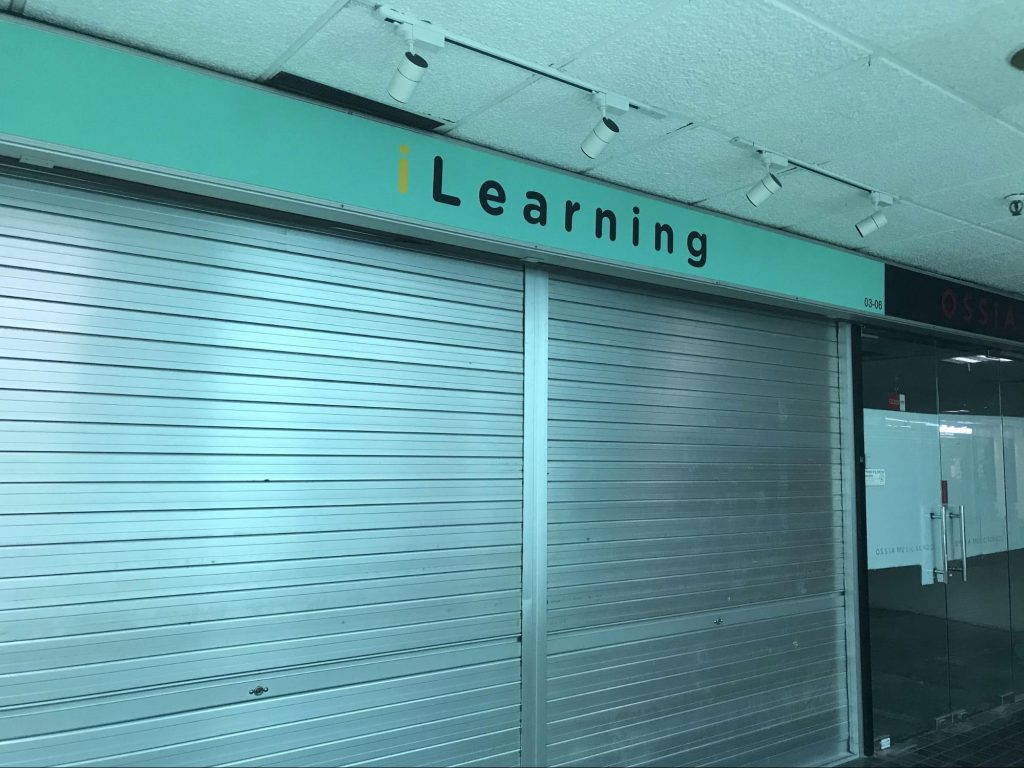
Larger centres would be better equipped to handle the long-term transition from face-to-face learning to e-learning for two reasons.
While smaller centres often depend on the quality of individual experienced teachers (whose experience in teaching would probably be mostly limited to teaching in a traditional classroom setting) to differentiate themselves from their competitors, larger centres rely less heavily on individual teachers and tend to place greater emphasis on teaching materials, which are standardised across teachers, while the teacher serves only as a facilitator and deliverer of pre-prepared content. The latter is transferred more easily to the online setting; the former is not.
Secondly, larger centres which can achieve significant internal economies of scale would have a greater incentive to channel their profits into developing their own better-quality in-house digital solutions than smaller centres, which do not have significant enrollment numbers to justify such an investment. Smaller centres and their students would thus remain at the mercy of inferior free apps like Skype or Google Hangouts, which were never created to be e-learning tools in the first place.
In the long term, this could lead to the exodus of many small players in the tuition industry, leaving behind mostly larger tuition centres which operate more like businesses than educational institutions. This would be bad for students, because a large part of the value-add in tuition is the expertise that a tutor is able to bring to the table. It tends to be the case that at bigger, multi-outlet centres, the quality of individual teachers matters less than their ability to deliver the standardised, homogenous content that the centre’s academics team has prepared for them. With the reduced competition in the tuition industry, students and parents could see themselves faced with higher prices and a lower variety of alternatives to choose from.
Of course, COVID-19 might just show students and parents that they might not really need tuition after all. But speaking as someone who chose to join the Science stream in JC (despite having a choice of either and having a greater passion for the latter) because science subjects seemed “safer” and “more tuition-able” than the humanities, this seems unlikely to happen. The existence of entire malls filled with tuition and enrichment centres, such as Beauty World Centre, speaks to the intensity of local tuition culture. Demand may be low for tuition in its current COVID-crippled online form, but it is likely to return once the COVID dust has settled and lessons go back to being face-to-face again.
Also, while the spotlight has been focused mainly on tuition centres, it bears remembering that it is not just tuition centres which have been affected. Enrichment centres which teach non-curriculum subjects have been affected by the suspension too, perhaps to an even greater extent.

Unlike the other tuition centres I’ve spoken to, conducting online lessons is not an option for Mdm Zhu. Her centre teaches painting, which needs to be taught in person. Her students also would not have the required art materials to complete their projects at home, as these materials would normally be sourced for and provided by the centre.
“We are completely not receiving any revenue this month,” she said in Mandarin, “but we still have to pay our teachers’ salaries and the rent on this shopspace. This shop has been open since 2017, we can hold out for another 2-3 months. But those which have just opened might experience more problems staying afloat.”
She is also uncertain about whether her students will return once the coronavirus situation has blown over. Unlike music or dance lessons, there are no formal qualifications or exams for painting, so there is no guarantee that her students will return to continue their lessons after the break.
“We expect to lose many students from this closure. During this break, the teachers will continue to update the curriculum of our art lessons and improve the classroom environment. The rest is difficult, but hopefully students will return to pick up some of the harder paintings once this is all over.”

